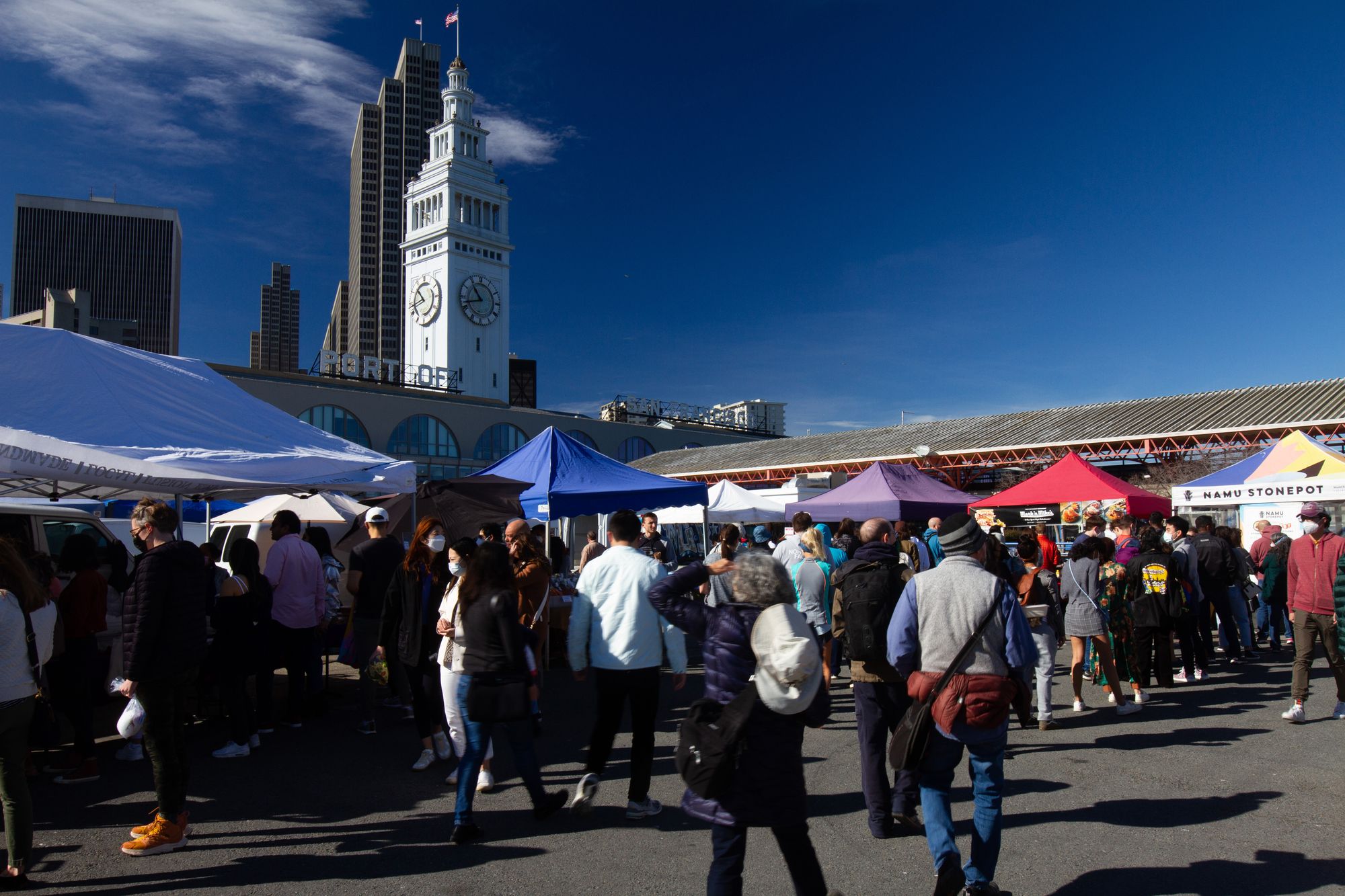Resurget Cineribus
With Ford set to redevelop Michigan Central Station, and transit on the regional agenda, should Amtrak go back to Michigan Central?

In the June 17, 2018 Sunday Detroit Free Press, Bill Ford laid out his vision for the Michigan Central Station. As a model, Ford held up the Ferry Terminal in San Francisco:

"The one that really caught my eye was the ferry terminal in San Francisco,” Ford said. “It’s a working ferry terminal, but it’s a meeting spot for everybody in that area. So people meet for coffee, they meet for lunch. They have some really fun and interesting retail experiences. It’s just buzzing with activity and buzzing with life. And I love that.”
Could this signal an openness on Ford’s part to return intercity passenger train service to Michigan Central? Could Michigan Central become a functioning railroad hub once again? Perhaps these conversations are already taking place between Ford, Amtrak, MDOT and other stakeholders. If they aren't, maybe they ought to be.
Running Amtrak trains out of Corktown accomplishes several strategic objectives for Ford, including:
- Bringing regular, daily foot traffic in the form of rail travelers to the station to support cafes, bars and other retail businesses
- Exposing rail travelers to Ford’s future mobility technologies
- Showcasing Ford as a leader in historic preservation with a strong commitment to Detroit
For Amtrak, advantages include:
- Furnishing more amenities for rail travelers
- Offering a competitive advantage, in the form of a beaux-arts architectural jewel, over other forms of intercity transportation
- Potentially grow traffic on the Michigan Services corridor, already among the busiest passenger rail corridors in the nation outside the northeast
- Possibility to connect to Canada's VIA Rail system through the nearby Detroit River rail tunnel
- Ability to reestablish a passenger rail connection between Detroit and Toledo and from there to the east coast
For passengers the benefits are clear:
- More expansive waiting areas
- More on-site amenities
- More amenities within walking distance to the station, such as Mercury Burger Bar, Two James Spirits, Gold Cash Gold and Slow's BBQ to name a few
- Easier connections to ground transportation, with a street configuration more welcoming to taxis, ride share services and passenger drop-off/pick-up
Until 1988, travelers between Detroit and Chicago were welcomed into stunning, grandiose high beaux-arts buildings at either end of the trip: Chicago's Union Station and Detroit's Michigan Central. For the Detroit region, what better way to welcome visitors arriving via Amtrak than with an opulent, fully-restored crown jewel as your calling card? It boldly tells Detroit's story to the world: that Detroit is truly America's great comeback city.
For this vision to be realized, there would have to be buy-in among Ford, Amtrak, MDOT, the owners of rail rights-of-way and other stakeholders. Most of all, rail passengers and the community at-large would have to be supportive of restoring passenger service to its former home at Michigan Central Station.
The rub might be that moving passenger service to MCS makes it difficult to preserve continuing Amtrak service to Royal Oak, Troy and Pontiac, due to the rail configuration near downtown. However, thinking on a grander scale, why not work toward a shared vision for rapid, frequent regional rail services that connect Pontiac, Mt. Clemens and Ann Arbor/DTW to MCS? From there, commuters can connect to the Amtrak intercity network. A system like this, as pictured below, could be built using existing rail rights-of-way. Ford could be a mobility partner providing autonomous locomotive technology for the regional rail network, reducing the operating cost by many multiples. The Connect Southeast Michigan Plan allows for localized funding sources to study and plan transit enhancements like this.
A hub-spoke system, with regional rail lines feeding into an intercity hub, is similar to cities like New York, where New Jersey Transit and the Long Island Railroad connect to Amtrak at Penn Station. Chicago is home to both Amtrak and Metra commuter trains.
The bold move by Ford in purchasing and rehabilitating what was Detroit's flagship symbol of decline is a signal that times have changed. It's clear that the impossible is now possible. It's time to dream big, challenge the conventional wisdom and think about how a reborn train station can best serve the needs of a resurgent region as a transportation hub as well as a future mobility lab.


